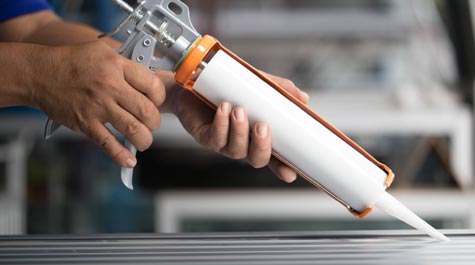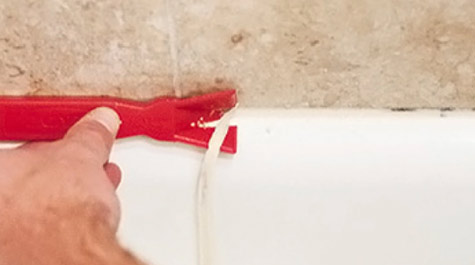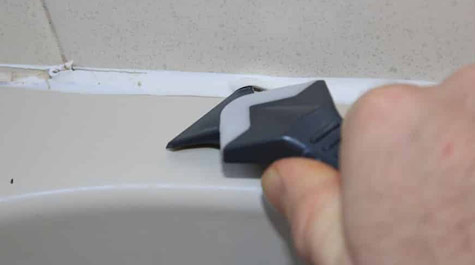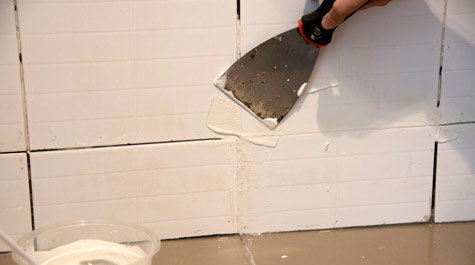Last Updated on February 3, 2022
Wiping silicone caulk off of fiberglass has always been a challenging task. Most people do not know exactly how to remove silicone caulk from fiberglass.
It is hard to find any method that works better than just scrubbing it away with water, elbow grease, and patience. There are many ways to remove silicone caulk from fiberglass, but they all have their drawbacks.
The following article will list the most common methods to remove silicone caulk from fiberglass and what each one does best.
What is Silicone Caulk?

Silicone caulk is used to seal up spaces where water or air could get in. It comes in different colors and types for this very purpose. When it is applied, silicone caulk also expands slightly, which gives it high tensile strength.
Silicone caulk contains both silicone and a peroxide compound. The combination of these two is what makes it hard to remove from fiberglass. When mixed with the surface tension of water, peroxide causes the silicone molecule to expand.
Removing silicone caulk can be difficult because it expands whenever water comes into contact.
The Easy Methods on How to Remove Silicone Caulk from Fiberglass?

Many methods are available for removing silicone caulk from fiberglass, but each has its own drawbacks. You can remove silicone caulk from fiberglass using the following methods.
1. Use Boiling Water
Removing silicone caulk with boiling water is a prevalent method. The idea is to heat the surface and soften the adhesive until it can be wiped clean.
This method works fine because it does not cause any damage to the fiberglass surface. In addition, it softens the adhesive enough so that you can wipe it away quickly with your finger.
2. Use a Blow Dryer
This method works by heating the adhesive and boiling the water inside it. This makes it soft enough to wipe away without much trouble.
This method is a good choice for removing silicone caulk from fiberglass because the heat only goes on the adhesive and doesn’t affect the surrounding area at all.
3. Use WD-40
WD-40 is a well-known lubricant that has many uses. It does a good job at removing silicone caulk from fiberglass but the drawback is that it freezes any remaining adhesive so you might have to use a stronger solvent to get rid of it later.
4. Use Paint Thinner
Paint thinner is a common solvent that can be used to remove silicone caulk from fiberglass. The drawback with this method is that paint thinner damages the surrounding areas and makes them brittle.
It is best to use an old cloth or rag when using paint thinner. Always make sure you run it under cold water before you wipe it on the affected areas so as to avoid any accidents.
5. Use a Chemical Solvent
Chemical solvents can be used on fiberglass and will not damage it in any way. They are an easy choice for removing silicone caulk from fiberglass, but they can dissolve some of the adhesives, making them hard to use.
6. Use Lacquer Thinner
This method is very similar to using paint thinner, but most people prefer lacquer thinner because it does not make the area brittle and can remove any remaining residue without leaving behind a stench.
7. Use a Heat Gun
A heat gun is an easy tool to find. It emits hot air that will melt the adhesive and easily wipe it away without any trouble.
The drawback of this method is that if you are not careful, it could also damage the surrounding areas. You have to use it at a distance, so it does not come in contact with anything else.
8. Use a Flat Screwdriver
Almost all silicone caulk has some penetration point where you can insert something thin and pull it out. Using a screwdriver or any other thin tool to fit through the hole, push it up against the surface to break the seal.
As you do so, it will break the seal, and the caulk will come off quickly and without any mess or damage to the fiberglass.
9. Use a Knife
Using a sharp-pointed knife or scraper is another way of removing silicone caulk from fiberglass that works quite well because it has a fragile edge.
You need to make sure you push the knife all the way through without damaging anything else, though.
10. Use an Adhesive Remover
Many companies make adhesive remover specifically for removing silicone caulk from fiberglass.
These products are very effective but costly if they are not readily available in your area. There are some homemade solutions as well, and they work very similarly.
Why Should You Remove It from Fiberglass?

There are a few reasons why you should remove silicone caulk from fiberglass, and they are:
- It can damage the surface if left there for a long time.
- It does not look good to have caulk around the edge of your fiberglass shower or bathtub.
- Removing it will make any future DIY projects more accessible and less messy.
- In addition, you might be able to avoid any unnecessary repairs that would be required if you left it there.
- If you are planning on selling your house, then it is best to remove the caulk so that way you don’t lose money due to repairs.
Errors People Make When Removing Silicone Caulk

When trying to remove silicone caulk from fiberglass, one of the most common mistakes people make is using too much force.
1. Using Too Much Force
Using too much force is one of the most common mistakes people make when removing silicone caulk.
It is best to use something thin so that way you can easily get rid of it without having to apply too much pressure on the surface, which might damage it in the process. It takes some time, but it is worth it.
2. Not Removing the Adhesive Underneath
Another common mistake is not removing all of the adhesives, which are very hard to do because they can be hidden very well.
If you don’t remove the entire residue, then it will never come off no matter what you do. Sooner or later, air and water will mix with it and lead to moldy growth, which will be very hard to get rid of.
So you need to make sure that you remove every last bit of it, so it does not come in contact with anything else within the house or outside.
3. Forcing it Out with Your Fingers
This is another common mistake people make when trying to remove silicone caulk from fiberglass and other surfaces. Just because it is soft does not mean that you should try and remove it with your fingers.
It will just make things harder for you in the long run, so it is best to avoid doing this at all costs.
Using a thin tool like a knife is the best way to go about it as it will allow you to get rid of it much easier and without damaging anything else.
4. Not Waiting Long Enough
Another mistake people make is not letting things sit for long enough to come off quickly.
Caulk takes at least 24 hours to dry out completely, so you must give it enough time for this to happen.
If you do not, then the caulk will come off with very little force, making things harder in the future because more pressure might be required.
5. Not Using a Lubricant
Another common mistake people make when removing silicone caulk from fiberglass is not using a lubricant.
A lubricant will make removing the caulk much easier because it will prevent it from drying out and sticking onto the surface even more than before.
Using an oil-based solution is best as they provide enough of a slippery texture, so it comes off very quickly.
6. Not Using a Scraper
This is another common mistake people make when removing silicone caulk, and it can be pretty frustrating.
Using something sharp like a knife might work, but the risk of damaging the surface is much higher than if you were to use a proper scraper.
If possible, go ahead and find one made of stainless steel because they do not rust like most others tend to.
Summary
Removing silicone caulk from fiberglass can be a daunting task, but it can be done relatively quickly if you follow the proper steps. Make sure to use the correct tools and wait long enough for the caulk to dry out completely before removing it. In addition, using a lubricant will help make things much more manageable.

